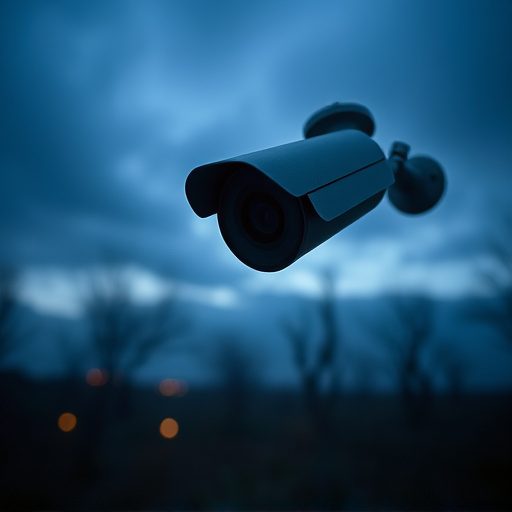Wireless spy cameras, leveraging cloud storage integration, offer enhanced surveillance convenience but raise significant privacy concerns due to their undetectable nature. While providing remote access to footage, their placement in public and private spaces threatens personal security and confidentiality. Smartphones with infrared capabilities and machine learning algorithms can detect these hidden devices through heat signatures, addressing privacy risks. Users must balance safety and ethics by physically checking public areas for suspicious devices and securing personal tech, staying compliant with local laws regarding hidden cameras.
Wireless spy cameras have become increasingly prevalent, raising concerns about privacy. Understanding these devices and their reliance on cloud storage is crucial in navigating today’s surveillance landscape. This article explores how smartphones can be used to detect hidden spy camera lenses, leveraging advanced technology to uncover clandestine recording devices. We delve into the capabilities of cloud storage in facilitating spy camera operations and discuss essential safety measures and ethical considerations for responsible detection practices.
- Understanding Wireless Spy Cameras and Their Rise
- The Power of Cloud Storage in Spy Camera Operations
- Detecting Spy Cameras Using Your Smartphone
- Safety Measures and Ethical Considerations for Spy Camera Lens Detection
Understanding Wireless Spy Cameras and Their Rise
Wireless Spy Cameras have emerged as a sophisticated and insidious tool in today’s digital age. These compact, often hidden devices leverage advanced technology to capture video and transmit it wirelessly, making them nearly impossible to detect with traditional means. Driven by the growing demand for surveillance and home security solutions, wireless spy cameras have become increasingly accessible and affordable.
The rise of these clandestine devices is largely attributed to their integration with cloud storage. By uploading captured footage directly to the cloud, users can remotely access recordings from anywhere with an internet connection, enhancing convenience and flexibility. This development has sparked significant concerns about privacy, as unauthorized placement of such cameras in public and private spaces poses a grave threat to personal security and confidentiality.
The Power of Cloud Storage in Spy Camera Operations
In the age of advanced technology, wireless spy cameras have become increasingly prevalent, offering covert surveillance solutions for various purposes. One significant advantage that sets these devices apart is their seamless integration with cloud storage systems. By utilizing cloud storage, users can remotely access recorded footage from anywhere at any time, effectively eliminating geographical constraints. This feature is particularly valuable in the context of spy camera operations, where discrete and secure data retrieval is paramount.
The benefits of cloud storage for wireless spy cameras are multifaceted. It ensures that critical evidence or surveillance footage is securely backed up, preventing loss due to hardware malfunctions or physical tampering. Additionally, cloud storage enables efficient data sharing and collaboration among team members, facilitating faster decision-making processes. This technology has revolutionized the way surveillance operations are conducted, making it easier to monitor and analyze activities with enhanced accessibility and convenience.
Detecting Spy Cameras Using Your Smartphone
In today’s digital era, the rise of wireless spy cameras has become a growing concern for privacy advocates. Fortunately, your smartphone can be an effective tool to detect these hidden devices. By utilizing specialized apps and some clever tricks, users can scan their surroundings for any suspicious Spy Cameras. Many modern smartphones are equipped with advanced sensors, including infrared capabilities, which can help identify the heat signatures of active cameras.
Additionally, apps that leverage cloud storage can analyze captured images and videos to detect patterns indicative of spy cameras. These applications often employ machine learning algorithms to learn and recognize common camera configurations, enabling users to stay ahead of potential privacy breaches. With a quick scan, you can ensure your personal spaces remain free from wireless spy cameras, giving you peace of mind.
Safety Measures and Ethical Considerations for Spy Camera Lens Detection
The detection and identification of hidden spy camera lenses using smartphones have raised important safety and ethical concerns. With the widespread use of wireless spy cameras, it’s crucial to be aware of potential privacy breaches. When utilizing apps or technologies for lens detection, users must ensure their own security and that of others by following strict guidelines. This includes maintaining a physical check for suspicious devices in public spaces and being vigilant about unknown sources accessing personal devices, especially those connected to cloud storage.
Ethical considerations also play a significant role. It’s essential to respect the privacy rights of individuals and avoid any form of surveillance without consent. Users should be transparent when employing such tools and use them responsibly, ensuring they do not invade others’ personal spaces or violate their confidentiality. Additionally, staying updated on local laws and regulations regarding hidden cameras is vital to ensure compliance and maintain a balanced approach to safety.
In an era where technology evolves rapidly, understanding and staying ahead of wireless spy cameras is essential. This article has illuminated the growing trend of these devices, their reliance on cloud storage for operation, and provided a practical guide to detecting them using smartphones. However, as we explore this topic, it’s crucial to balance technological advancements with ethical considerations and privacy safety measures. By staying informed and adopting preventive steps, individuals can protect their personal spaces and data in the digital age.
